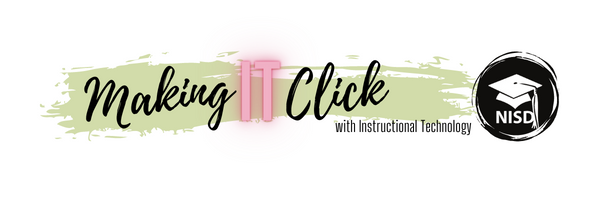Many educators today are making the shift from teacher centered to student-centered learning experiences. Fourth grade English Language Arts and Social Studies teacher Deanna McCabe in partnership with her teammate Charlotte DeRossett, GATES teacher Cindy Ford, and Library Media Specialist Jamie Jensen at Cox Elementary were able to design a personalized learning experience that challenged students to use nonfiction text features to create an interactive project that will teach others about natural disasters.
Originally the project began as students simply making posters using nonfiction text features to showcase the information they had researched about natural disasters. Mrs. McCabe and Mrs. DeRossett felt that this project was a great opportunity to dive into personalized learning and integrated many technology tools that would support and enhance the learning process. Mrs. McCabe said, “In the beginning there was a lot of brainstorming involved - a lot of collaboration, investigating, researching, and learning in order to figure out how to make this project happen!” She and Mrs. DeRossett worked hard to tier their students' abilities, as well as group them by their interests”. Once Mrs. McCabe and Mrs. DeRossett figured out that they wanted students to have the opportunity to present their final project “expo-style” for K-5 students at Cox Elementary, they were able to put the instructional pieces together. Mrs. McCabe described the planning process as the most time-consuming portion of this project. She feels like the key to their planning success was determining what they wanted the final product to look like, collaborating with others to push their students beyond what they knew, and being open to productive struggle for themselves and their students.
 Mrs. McCabe created an interest survey using Google Forms so she and Mrs. DeRossett could find out more about their students’ interests in natural disasters. Then students were strategically grouped in Google Sheets based on their ability levels and interests. Students were given a research template to guide their investigations about natural disasters. Each student was responsible for teaching a specific topic related to their natural disaster which helped hold them accountable for contributing to the “expo-style” presentation. Mrs. McCabe believes this strategic grouping expectation took some pressure off group members because they were able to work on their own projects independently, but also had the opportunity to collaborate as a group to present their information to other students at Cox Elementary.
Mrs. McCabe created an interest survey using Google Forms so she and Mrs. DeRossett could find out more about their students’ interests in natural disasters. Then students were strategically grouped in Google Sheets based on their ability levels and interests. Students were given a research template to guide their investigations about natural disasters. Each student was responsible for teaching a specific topic related to their natural disaster which helped hold them accountable for contributing to the “expo-style” presentation. Mrs. McCabe believes this strategic grouping expectation took some pressure off group members because they were able to work on their own projects independently, but also had the opportunity to collaborate as a group to present their information to other students at Cox Elementary.  Students were also provided differentiated project menus with a multitude of options, rubrics, and clear expectations for designing their project. The students loved having a choice for how they would engage their learners based off of how they themselves love to learn. Mrs. McCabe and Mrs. DeRossett introduced their students to a variety of apps, websites, and experiences that they had never used before. Using technology was critical in the planning, research, implementation, and reflections for this entire project. Mrs. McCabe and Mrs. DeRossett used many different technology tools such as: Google Apps for Education (Slides, Docs, Forms, Sheets, Sites), Metaverse (augmented reality), VR tours, digital breakouts, and green screens (DoInk and WeVideo) that supported the learning process and product for this project. These technology tools increased student's excitement, participation, and enjoyment of the learning process. These tools were also easily differentiated based on individual students' needs. The students were able to manipulate the tools so that they could successfully teach other students as young as kindergarten or as old as 5th grade.
Students were also provided differentiated project menus with a multitude of options, rubrics, and clear expectations for designing their project. The students loved having a choice for how they would engage their learners based off of how they themselves love to learn. Mrs. McCabe and Mrs. DeRossett introduced their students to a variety of apps, websites, and experiences that they had never used before. Using technology was critical in the planning, research, implementation, and reflections for this entire project. Mrs. McCabe and Mrs. DeRossett used many different technology tools such as: Google Apps for Education (Slides, Docs, Forms, Sheets, Sites), Metaverse (augmented reality), VR tours, digital breakouts, and green screens (DoInk and WeVideo) that supported the learning process and product for this project. These technology tools increased student's excitement, participation, and enjoyment of the learning process. These tools were also easily differentiated based on individual students' needs. The students were able to manipulate the tools so that they could successfully teach other students as young as kindergarten or as old as 5th grade. 

No comments:
Post a Comment
Note: Only a member of this blog may post a comment.